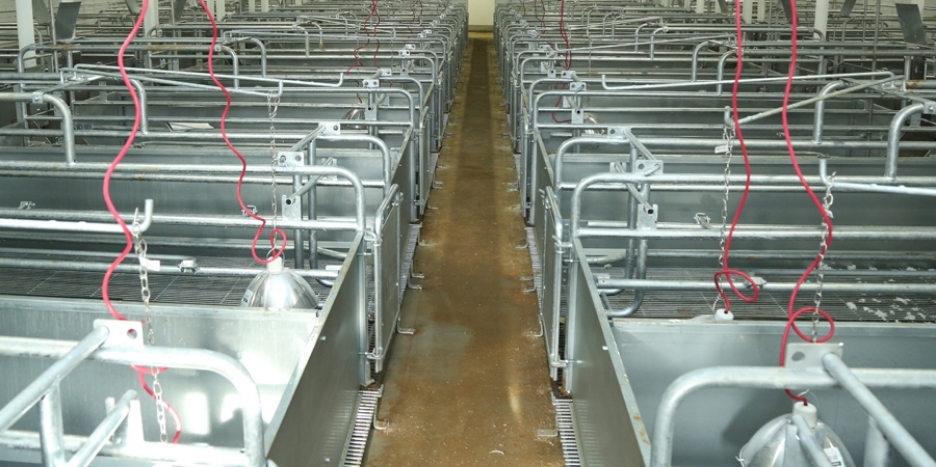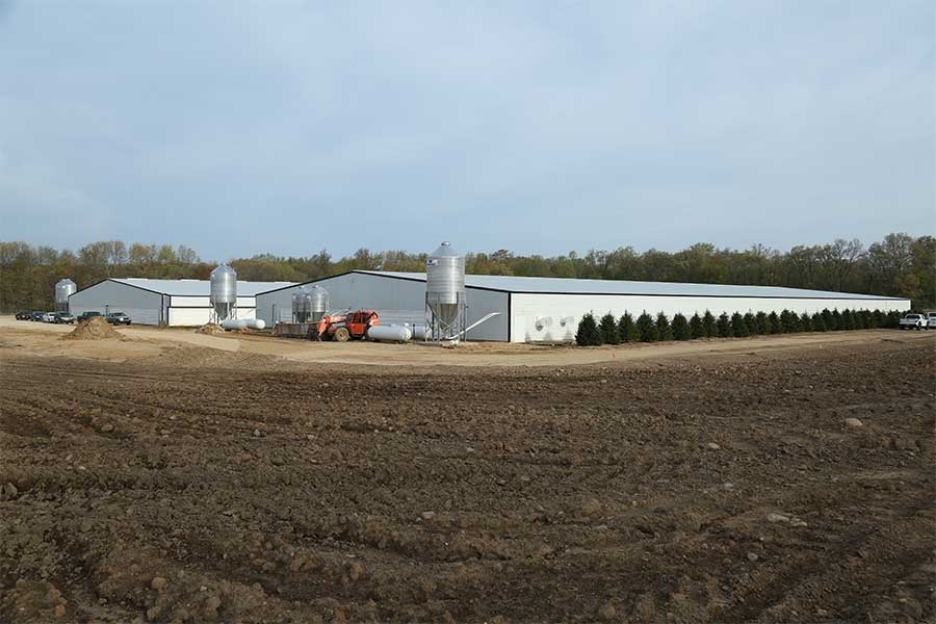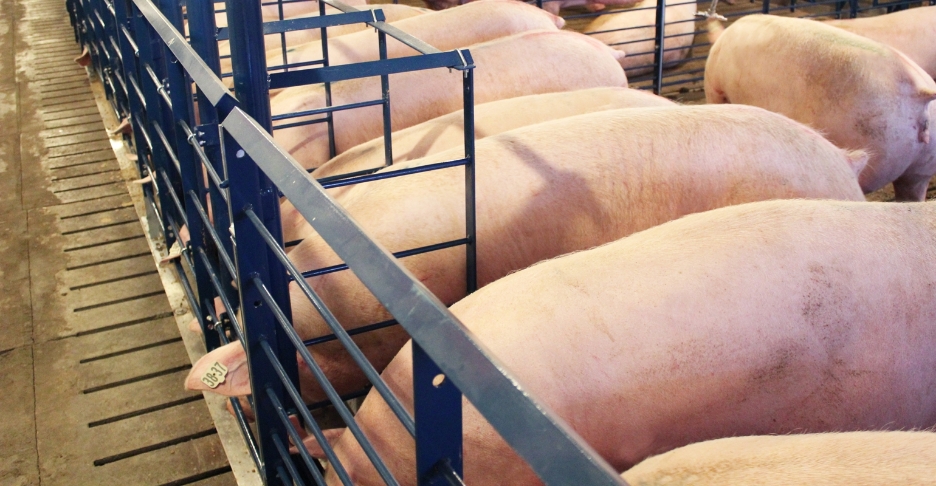Retro of existing farrowing rooms adds square footage to accommodate larger litters without reducing the total number of crates.
Blog
Ryan and Reagan Hunter’s 2500-sow farm in southern Michigan
Producers considering group sow housing should consider an alternative to ESF.
Checking the motor plates offers valuable information when comparing two different motors.
A recent addition to Hog Slat Inc.’s engineering facility will help provide producers with information focused on increasing the useful life of cool cell pads.
Step-Down Filtration systems improve sediment removal from the water sources used in livestock and poultry production.
When water evaporates, pure water is released leaving behind mineral deposits on the cool cell pads
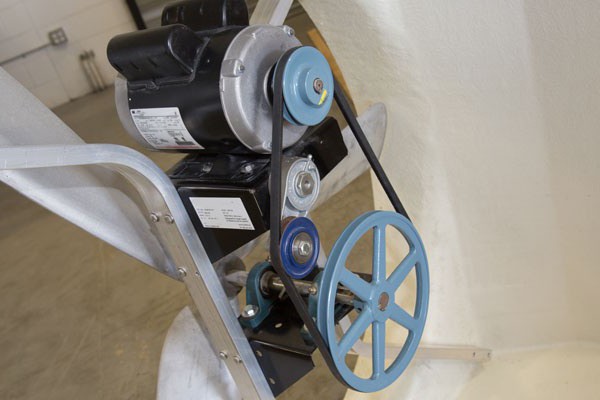
Replacing the belts on fans every year is a smart investment to ensure they are delivering their maximum performance. Worn fan belts can cause as much as 20% loss of cfm output.
Ordering the correct replacement fan belt is as easy taking a few simple measurements.
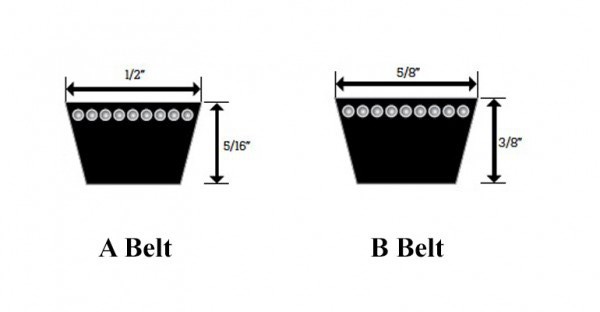
First, to determine what type of belt is on your fan, measure the width of the belt. Most fan belts are A type belts with a measurement of 1/2″. If the fan belt measures 5/8″ it is classified as a type B belt. You may see a belt described as type AX. The X means it has a cogged design or notches in the belt. The cogged profile increases the power transfer and typically used for only industrial applications because of their higher cost.

Next, you need to measure the length of the belt. Use a cloth measuring tape (not a steel one) and wrap it around the outside of the belt. You also use a thin string to take this measurement and place it on a steel tape to get the correct length.
Next, for “A” Belts (1/2” width) subtract two-inches from the outside measurement to select the correct V-belt. For example, if the outer measurement is 48-inches and you subtract two inches, then HSA46 would be the right belt for your fan.
For “B” Belts (5/8” width) subtract 3” from the outside measurement to select the correct V-Belt. For example, if the outer measurement is 48-inches and you subtract three inches, then HSB45 would be the right belt for your fan.
Hog Slat’s line of GroBelts offers producers top-quality V-belts at a great price. GroBelts feature wear-resistant, high modulus compression rubber embedded with polyester cords to reduce stretch. To order go to GroBelts.
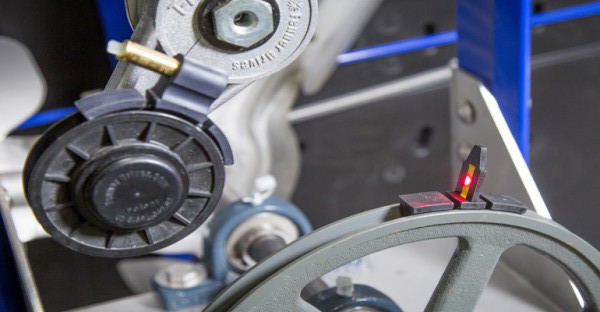
Also, see our Laser Pulley Alignment Kit. It’s a great tool to accurately check the alignment of the drive pulleys while you are changing the fan belts.
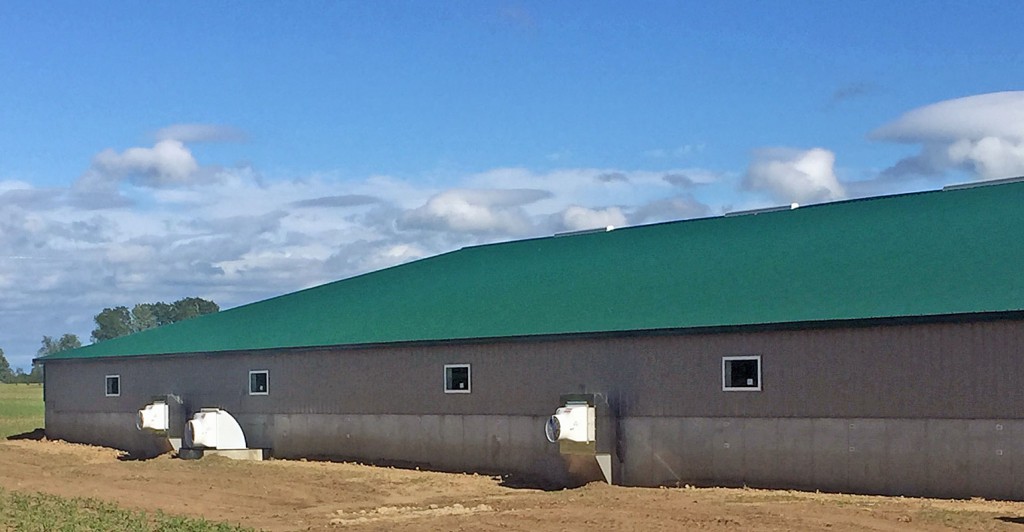 The biggest benefit of solid sided finishing facilities may be the hardest to measure.
The biggest benefit of solid sided finishing facilities may be the hardest to measure.
Recently we published an article highlighting some key factors contributing to the growing popularity of solid sided curtain finishing houses. These included heat savings, reduced maintenance, and improved ventilation.
While the heat savings and reduced maintenance cost might be the easiest to track, the most significant benefit may come from improving the pig’s environment.
The tendency when hearing heaters running continuously on a cold winter morning (especially after paying the latest LP bill) is to start easing the variable speed down or lowering the "on" cycle time for the minimum winter fans. Simple logic; cut the minimum winter rate by half from 2 cfm/pig to 1 cfm, and reduce LP usage by half.
Unfortunately, this also increases the building's relative humidity along with higher gas and dust levels. The poorer environment can cause slow growth and increase the pigs’ susceptibility to disease. In some cases, this decreased lung function will hurt performance throughout the pig's production cycle. Lower ventilation rates can also jeopardize worker's health and cause the building's interior to deteriorate quicker.
Solid sided finishing buildings, with insulated sidewalls replacing curtains, do not reduce the amount of minimum ventilation required to provide a good environment. Instead, the higher R-value walls significantly reduce the amount of heat loss compared to a curtain. The BTUs normally generated to replace heat loss through the curtains can instead be exhausted through the fans to improve the building's interior climate and pig performance.
To illustrate the amount of BTU lost through a curtain sided finisher compared to a solid sided building we calculated the heat loss for a typical sized single wide finishing unit.
Size: 1100 head Dem:
41’ x 224’
Inside Temp: 70
Outside Temp: 30
Pig Size: 12 lbs.
Ceiling: R-30
5’ Curtain: R-1
3’ x6” Concrete Wall: R-5
5’ x6” Insulated Wall: R-19
Minimum ventilation rate: 2 cfm/head
Ventilation Heat Loss
1100 head x 2 cfm/head= 2,000 cfm
2,000 x 60 = 120,000 cf/hr
120,000 x (70-30) x.018 = 86,400 BTU/Hr
Curtain Sided
Ceiling 41 x 224 = 9,184 sq. ft.
9184 x (70-30) / R-30 = 12,245 BTU/Hr
End Walls 41x 8 x 2 = 656 sq. ft.
656 x (70-30) / R-19 = 1,381 BTU/Hr
Concrete side wall 2’ x 224 x 2 = 896
896 x (70-30) / 5 = 7,168 BTU/Hr
Curtain 5’ x 224’ x 2 = 2240
2240 x (70-30) / 1 = = 89,600/ BTU/Hr
Solid Sided
Ceiling 41 x 224 = 9,184 sq. ft.
9184 x (70-30) / R-30 = 12,245 BTU/Hr
End Walls 41x 8 x 2 = 656 sq. ft.
656 x (70-30) / R-19 = 1,381 BTU/Hr
Concrete side wall 2’ x 224 x 2 = 896
896 x (70-30) / 5 = 7,168 BTU/Hr
Insulated Side wall 5’ x 224’ x 2 = 2240
2240 x (70-30) / 19 = = 4,715/ BTU/Hr
When we compare the curtain heat loss (89,600 BTU/ Hr) to the heat loss through the solid wall building (4,715 BTU/Hr.) the difference is close to 85,000 BTU/ Hr.
The 85,000 BTU lost through curtain comes very close to equaling the amount of BTU exhausted through the ventilation system. To think of it another way, it’s like doubling the ventilation fans and not getting the benefits. BTUs lost through the building just disappear. BTUs exhausted by the fans remove moisture and dust from the building creating a better growing environment for the pigs.
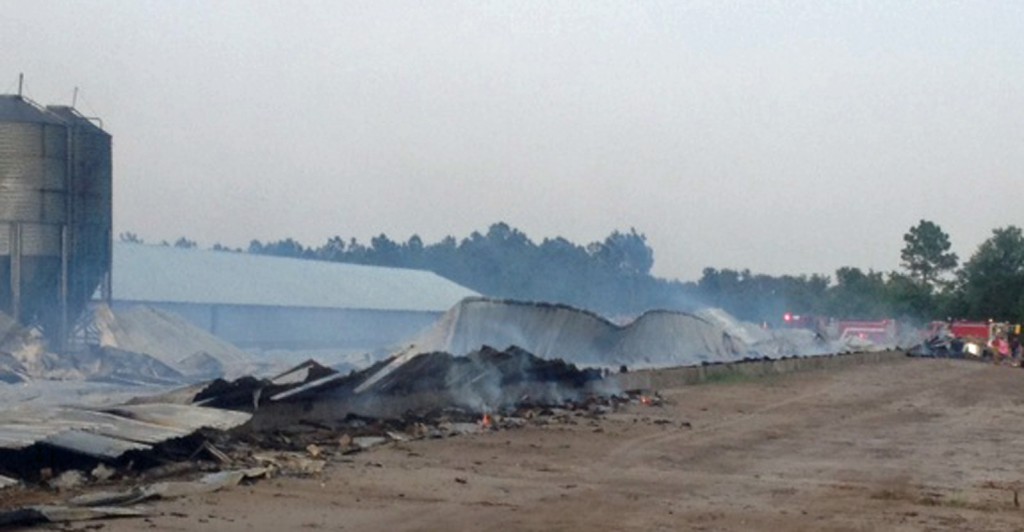 Minimize the effects of fire losses in livestock and poultry buildings by following these basic guidelines and implementing a fire plan.
Minimize the effects of fire losses in livestock and poultry buildings by following these basic guidelines and implementing a fire plan.
According to the U.S. Fire Administration, agricultural fires annually account for $102 million in property damage and result in 25 fatalities. One-third of these fires occur in livestock and poultry operations with larger production facilities increasing the potential for catastrophic losses from replacement costs and interruptions in production schedules.
Firestops or draft barriers
Firestops act as draft barriers to reduce the rapid spread of fire through an attic. Firestops consist of using a flame resistant material, such as 5/8-inch rated sheetrock covering both sides of a truss that contacts the roofline. Since any openings in the barrier reduce its effectiveness, the sheetrock should be notch to fit around the purlins. Install firestops every 100 feet of building length.
Breakaway walkways
Use lightweight framing in the middle section of connecting hallways. If a fire breaks out in one building, a tractor and loader could be used to remove the center part preventing the fire from spreading to other buildings down the walkway.
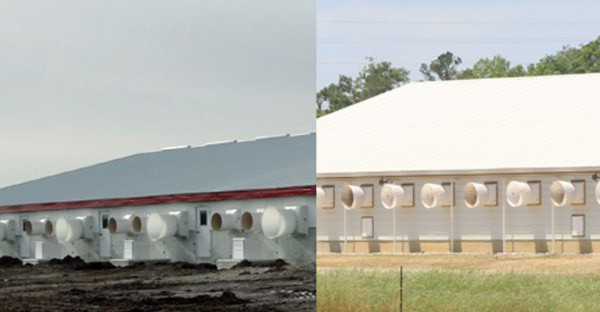
Fire escape doors
Provide an exit door every 125 feet of the exterior wall to prevent areas where people could be trapped. Individual farrowing and nursery rooms should include some type of exterior escape door; site fabricated “kick-out” door, 36”x 36” window, or narrow walk door.
Lighting protection
Any metal structures, such as bulk bins, located next to the buildings should be grounded with a ground rod for lightning protection. Install a surge protection device on the electric entrance panel.
Incinerator and generator
Incinerators should be 50 feet or more from the buildings. Generator rooms inside a building should include walls with a 2-hour fire rating to delay the spread of a generator fire. 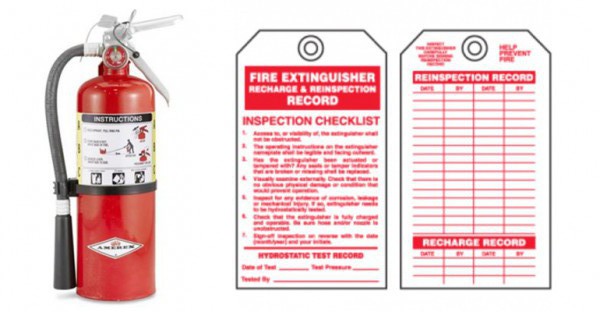
Fire extinguisher
Install a 10-pound ABC dry chemical fire extinguisher at exterior doorways and electric panels. Provide additional units every 100 feet of building length. Fire extinguishers need to be checked monthly by the farm personnel and annually by an outside source. Have spare extinguishers to replace any used until they are recharged.
Electrical systems
Return all repairs to the original installed condition. Three wire nuts and a roll of electrical tape, or whatever tape maybe handy, is a temporary fix but is often forgotten. Do not use electrical drop cords in place of permanent wiring. Do not bypass safety devices, sensors, breakers, fuses or other devices in a system; they are there for a reason.
Train all employees on how to cut off the electrical power to individual buildings and the location of the primary cutoff for the entire facility.
Heaters
Heaters and brooders are probably responsible for more barn fires than any other single source. Maintain heaters in good working condition, inspecting and servicing the heater components frequently, removing flammable foreign material, such as rodent nests, insects, and dust. Inspect rubber gas hoses for cracks. After any cleaning or servicing that requires removal of any part of the gas system check for leaks. Gas sniffers are cheap, typically $100 or less. Train all employees on how to shut off the gas to the entire facility.
Heat lamps cords are highly susceptible to damage because they are frequently moved. Inspect the outside covering and replaced when the cord becomes worn or cracked and never repair damaged areas with electrical tape.
Fire plan
Every farm should have a written plan detailing how employees should respond to fires and where to go in case of an emergency. Have all emergency numbers posted where all employees can access them and include the farm’s 911 address. Implement and schedule quarterly fire drills.
- 2024
- 2023
- 2022
- 2021
- 2020
- 2019
- 2018
- 2017
- 2016
- 2015
- 2013












 Україна
Україна Méjico
Méjico